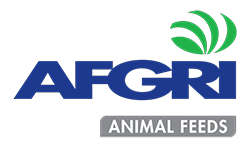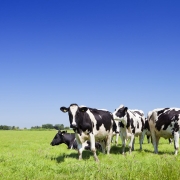Feeding the transition cow
By SP Els, AFGRI Animal Feeds
Sound nutrition and management practices during the transition period will have a positive financial impact on dairy businesses.
Most farmers have specific, quantifiable goals regarding milk production, milk solids, feed and labour costs, and profitability in terms of profit per hectare or per cow. However, it seems that the opposite is true for reproduction and cow comfort.
Low dry matter intake (DMI), with subsequent negative energy balance (NEB) and metabolic disorders, as well as management and environmental factors occurring during the transition period, are responsible for reproductive failure and profit loss, and not high milk production as is commonly believed.
Pre- and postpartum feeding
The transition period generally extends from three weeks before calving until three weeks after calving. During this phase, the cow undergoes dramatic physiological, immunological, metabolic and nutritional changes.
Formulating diets with a negative dietary cation-anion difference (DCAD) in the prepartum period in a bid to reduce subclinical and clinical hypocalcaemia and its associated diseases, is but one aspect of the nutritional strategy aimed at supporting metabolic adaption during the transition period.
Demand for amino acids, glucose and fatty acids at day 250 of gestation, increases approximately fivefold at day four postpartum for some of these nutrients. Furthermore, changes in the demand and supply of these nutrients, minerals and trace minerals postpartum directly impact immune function.
The question remains whether the feeding strategy is amended pre- and postpartum to help the liver function optimally and adapt the rumen, which is going through morphological, functional and microbiota changes, to achieve the following:
- Higher DMI.
- Shortened duration of NEB.
- Higher glucose concentrations.
- Increased levels of circulating IGF-1.
- Lower non-esterified fatty acid (NEFA) concentrations.
Higher levels of NEFA in the blood is associated with lower reproduction and reduced oocyte quality and may lower the survival rate of the embryo after fertilisation. If the cow produced a calf from an inferior embryo, the gene expression of the calf may be negatively impacted, a process known as epigenetics. Epigenetics is a change in the genes’ core functionality and is impacted by something other than DNA; in this case, ‘poor’ nutrition pre- and postpartum.
Carbohydrates, amino acids, minerals
Further nutritional strategies to consider are to feed a mix of carbohydrates and to finetune the amount of carbohydrates based on the dry, fresh and/or early lactation diets, as well as the total fermentable carbohydrates fed. The digestibility of starch as well as neutral detergent fibre (NDF) must also be measured.
The fibre in diets affects intake and rumen function. The amount of physically effective NDF (peNDF) needed in the fresh diet depends on intake, total starch and rumen degradable starch, forage digestibility and particle size. In addition, supplementing amino acids (the building blocks of enzymes and hormones), which is important in several biological functions during the transition period, has been shown to:
- Reduce oxidative stress.
- Increase DMI.
- Affect embryonic gene expression.
- Improve immune-metabolic status.
One should be aware of contradictory statements regarding ‘fats’ in transition diets and that only specific fatty acids may have positive effects, for instance decreasing the NEFAs in the liver. Special attention must be given to improving trace mineral availability that will positively impact immune function, and ultimately reproductive performance.
Improving feeding behaviour
Feeding behaviour associated with calving, stocking density, grouping and pen movement, may have a negative impact on rumen health. Key factors to remember when wanting to improve feeding behaviour in fresh cows, are:
- Reduction of heat stress.
- Maximising opportunities for cows to eat during the day.
- Keeping fresh cows separate.
- Avoiding overcrowding in fresh cow pens with a stocking density below or at 85%.
Remember, all dairy cows may experience low DMI, NEB and metabolic disorders to some extent. How these factors are minimised during the transition period through nutrition and sound management, as well as how environmental factors are managed, will positively affect profits.


.png)

